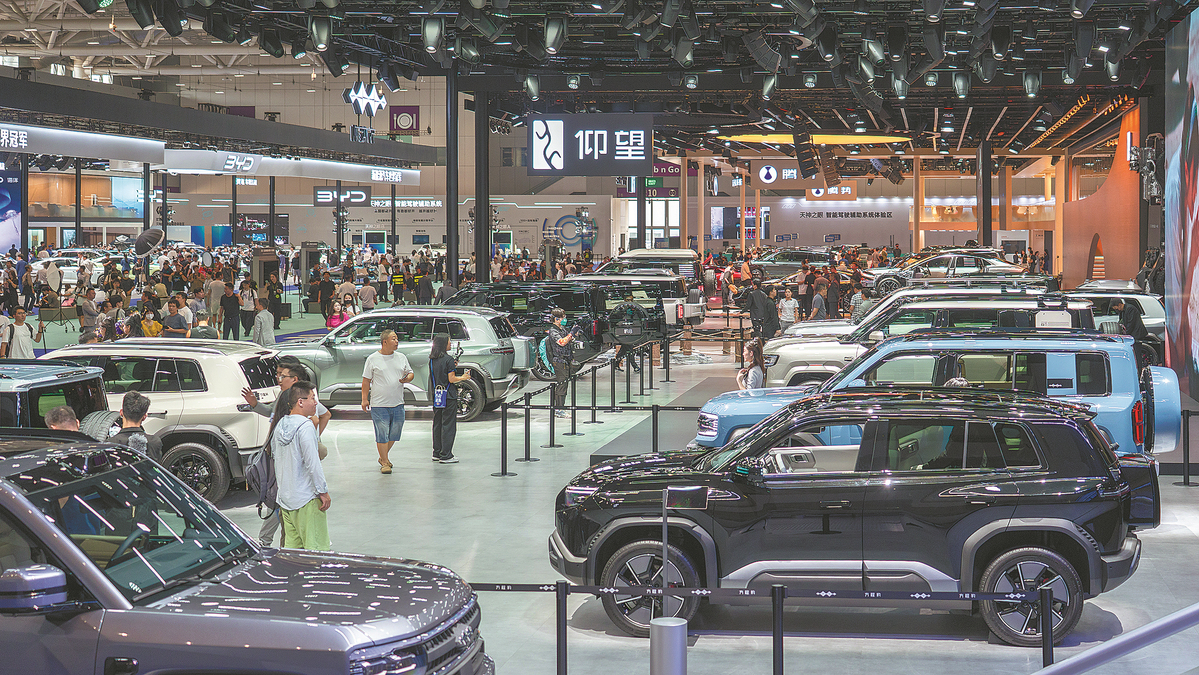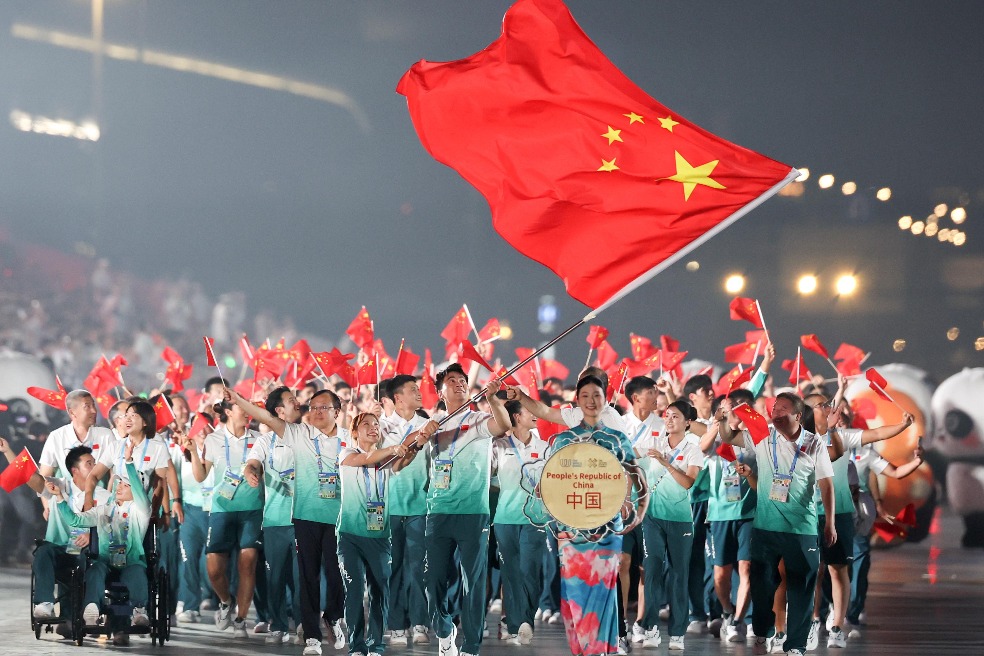NEVs help domestic brands seize market
Trade-in policies and new models result in year-on-year growth


Chinese automotive brands captured over 70 percent of the domestic passenger car market in July, fueled by surging new energy vehicle sales. It signals a fundamental shift in the industry's competitive dynamics.
According to the China Association of Automobile Manufacturers, vehicle sales reached 2.59 million units in July, down 10.7 percent month-on-month but up 14.7 percent year-on-year.
It brought this year's cumulative vehicle sales to 18.27 million units, a year-on-year growth of 12 percent.
Chen Shihua, deputy secretary-general of the CAAM, said that the auto market entered its traditional off-season in July, with some manufacturers undertaking annual maintenance. This led to a slowdown in production and sales, resulting in the month-on-month decline.
Nonetheless, trade-in policies continued to show positive effects, and automakers have been introducing new models, helping the market maintain stable operations and achieve year-on-year growth, Chen added.
Notably, sales of Chinese brands' passenger cars reached 1.6 million units in July, a year-on-year increase of 21.3 percent. The market share of domestic brands in the passenger car market exceeded 70 percent, an increase of 3.8 percentage points compared to the same period of 2024.
In 2014, this figure stood at just 38.44 percent, highlighting the growth trajectory of Chinese brands over the past decade.
The CAAM stated that improved technological capabilities and consumers recognition are helping domestic brands solidify advantages amid market transformation.
In contrast, joint venture brands, which are still wavering in their transition to electrification, continue to lose market share.
Compared to the same period of 2024, all international brands except German ones, which hold a 12.8 percent market share, have experienced sales declines. South Korean brands, in particular, now account for only 1.6 percent of the market in China.
Chen said that the rise in market share for Chinese auto brands is linked to NEVs, with sales in the first seven months of 2025 reaching 6.91 million units, a year-on-year increase of 32.3 percent.
In July alone, NEV sales reached 1.26 million units, up 27.4 percent year-on-year. The sector accounted for 48.7 percent of total new car sales.
In addition to driving growth in the domestic market, Chinese automotive brands are accelerating their expansion into overseas markets. Data show that in July, car exports reached 575,000 units, a year-on-year increase of 22.6 percent.
Among top exporters, Chery led with 119,000 units exported in July, a year-on-year increase of 31.9 percent, accounting for 20.7 percent of the total exports.
BYD exported 81,000 units, jumping 160 percent year-on-year, which made it the most significant export growth.
According to Chen, NEVs have become the main engine in automobile exports. However, due to the underdeveloped infrastructure in overseas markets, such consumers have been slow to embrace electric vehicles. Instead, plug-in hybrid vehicles have experienced accelerated growth.
The export of PHEVs soared 220 percent year-on-year to 85,000 units in July. Meanwhile, 141,000 pure EVs were exported, up 83.6 percent compared with same period of 2024.
Chinese brands, including Great Wall, Chery, Changan, and BYD, are establishing overseas research and production bases to strengthen their global presence and better cater to local market demands.
The China Passenger Car Association revised 2025 forecasts upward earlier this month based on "better-than-expected" performance.
The CPCA now projects a 6 percent growth in China's car sales this year, with car export growth likely to reach 14 percent. This compares with the CPCA's June estimates of a 5 percent increase in car sales and a 10 percent rise in exports.
The association noted that in the first half, China's car market showed positive results due to policy incentives and a shift toward rational industry development. Expanded subsidies for trading in old cars and timely local subsidies boosted consumption, while efforts to reduce price competition cooled chaotic price-cutting.
According to CPCA data, the number of discounted vehicle models during January-July fell to 106 in 2025, down from 147 in 2024 and 113 in 2023. This follows a 2020-22 average of just 50 discounted models annually.
Price reductions eased in July, with only 17 discounted models versus 23 in July 2024. Average discounts reached 21,000 yuan ($2,920) during the first seven months of 2025, while July alone saw average cuts of 16,000 yuan, signaling reduced price competition.
Consumer priorities shifted from price to vehicle reliability and brand reputation, with only 15 percent prioritizing price, down 28 percentage points from 2022. This change led automakers to focus more on quality and R&D, easing industry pressure and raising profit margins to 6.9 percent in June.
Cui Dongshu, secretary-general of the CPCA, noted that automakers are focusing more on quality control and R&D instead of price competition. This shift has eased the price war and industry pressures.
caoyingying@chinadaily.com.cn
Today's Top News
- AI powering China's industrial evolution
- Tech innovation propels nation's industrial future
- Chengdu World Games concludes amid wide acclaim
- Trump, Putin say Alaska meeting 'constructive'
- China, India to?start new round?of consultations
- Healthy China-India relations good for regional development and stability






























